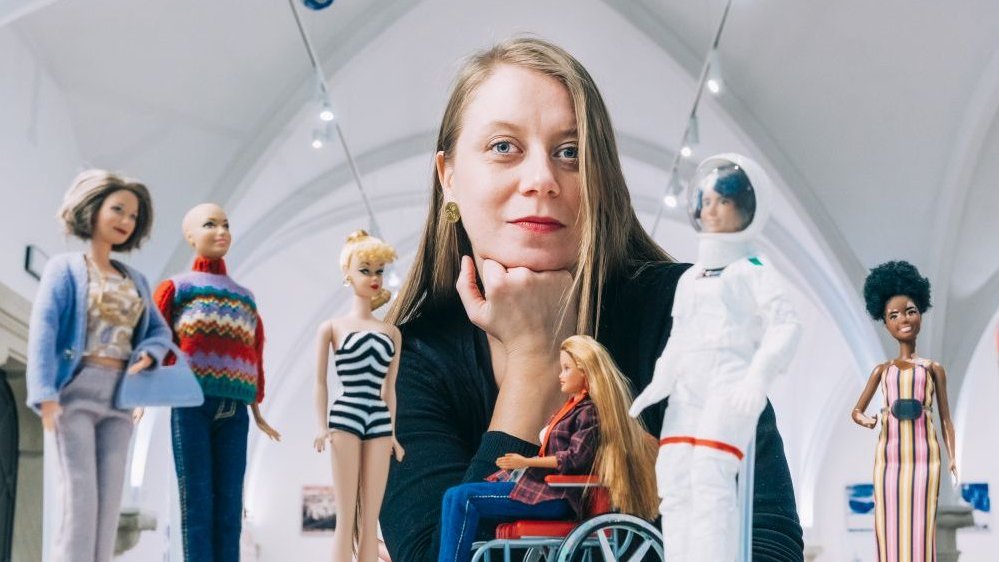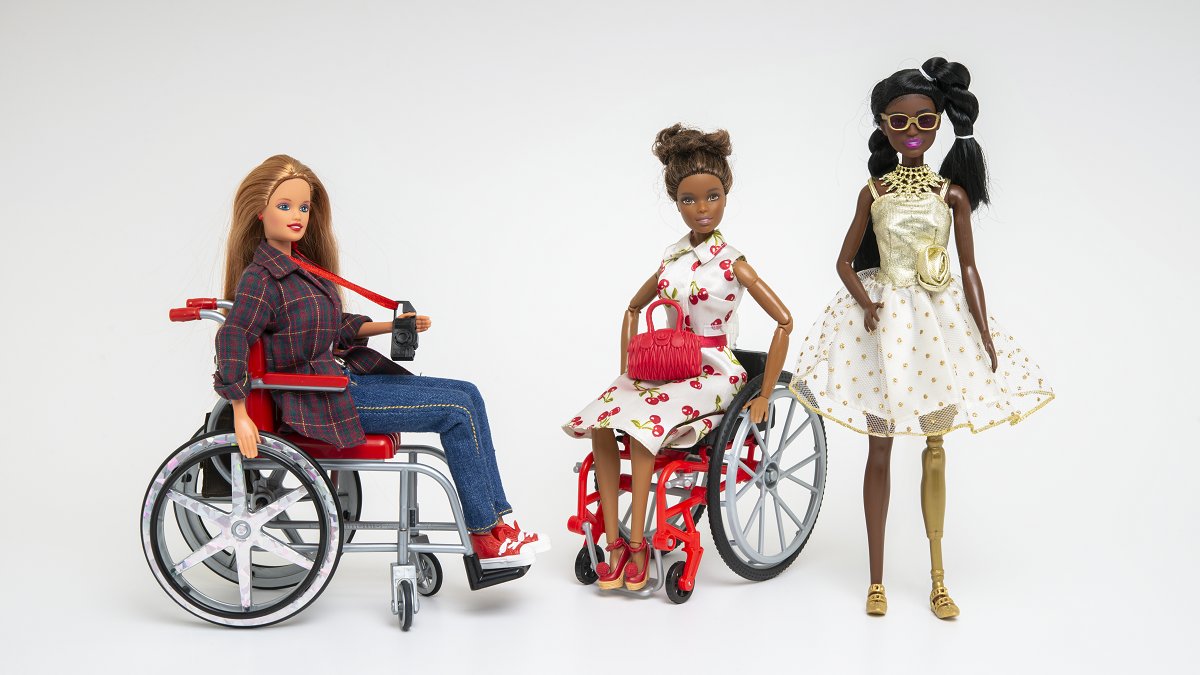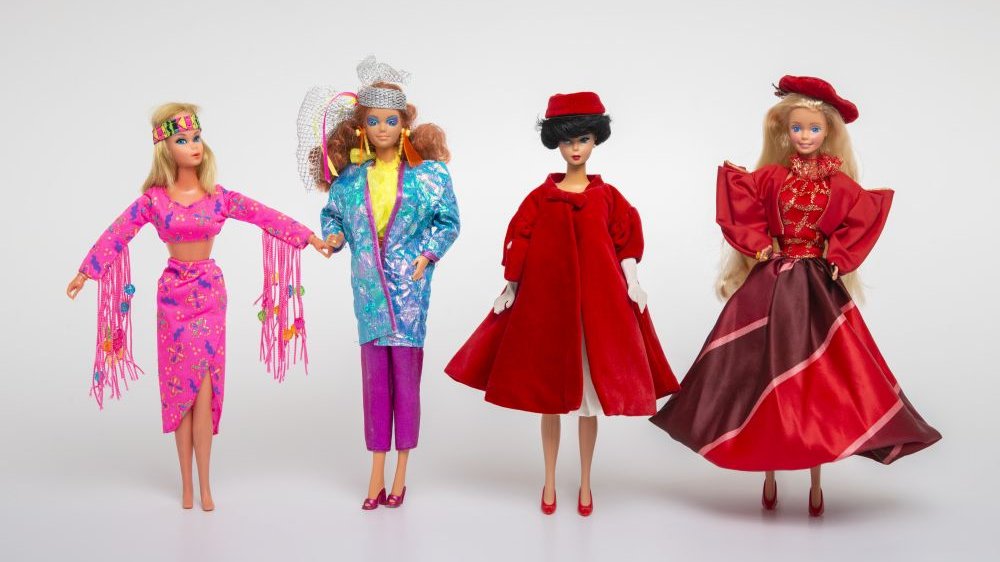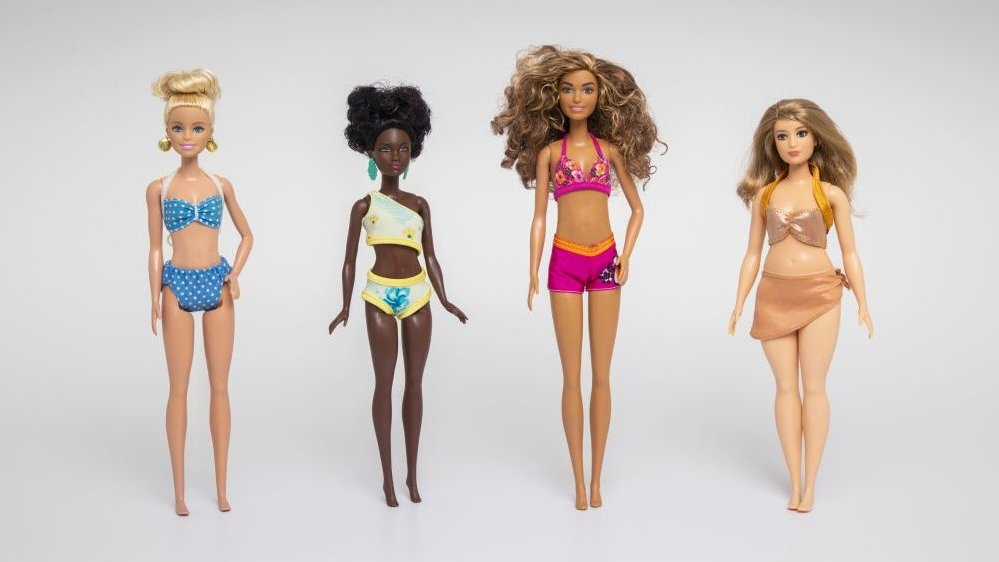The world according to Barbie

When I was little, having a Barbie doll was every girl's dream. Barbies were only available in the hard currency stores known as Peweks. As I grew older, I looked at the dolls with increasing embarrassment. Today, I think of them as pop culture icons.
I would put "pop" in parentheses now, although I have never been particularly fond of this doll. I had Barbie and Ken but never considered them to be more than my cuddly toy animals. For years, I had an aversion to Barbie. When I had to learn her story for professional purposes, I realised just how ignorant I had been. I set out on using Barbie to outline the history of women hoping to make up for years of neglect. This has given me the idea of holding the exhibition.
The stereotypical Barbie is an exaggerated blonde with pink gadgets...
...a dumb blonde whose only interest is fashion. This is Barbie stereotype is predominant in Poland. Shut off from the West for years, Poland missed Barbie's heyday. By the time the toy, in pink by then, reached us, criticism ran deep. Bear in mind that Barbie didn't always appear in pink. The colour was only adopted in 1977, decades after the dolls first hit the shelves in 1959. Barbie existed for 18 years without it. Even if a dab of pink here and there was incorporated into older designs, it was not the dominant colour and was certainly far from defining the doll.
How did her story unfold then?
There as an interesting story about the doll's maker, Ruth Handler. Her parents, who were Polish Jews, immigrated into the United States. Prior to 1959, all dolls available in shops were "babies" meant to prepare girls for the only appropriate role in life envisioned for US women, i.e. for being perfect mothers, wives, and housewives. Ruth Handler watched her daughter and her friends play with flat cardboard dolls dressing them in paper clothes. Girls wanted to be women. Unfortunately, the idea of creating an "adult" doll was rejected. No one believed they had market potential. When Ruth visited Europe, she saw the Bild Lilli doll based on a popular German comic strip from the Bild Zeitung magazine. The comic portrayed a liberated, entrepreneurial young woman who, like the rest of her generation, wanted to forget the war. Handler bought the doll and showed it to Mattel, a company she had co-founded and co-owned with her husband. The rest is history.
What was the nature of the breakthrough?
The first dolls were a blonde and a brunette. The blonde version turned out to sell better. She sported a striped black-and-white bathing suit. Importantly, Barbie was originally called Teen-Age Fashion Model. Her job allowed her to make her own money. Very few women in those days were employed. They would either stay at home or choose to work as a nurse, teacher, seamstress, secretary, or shop assistant. Barbie went beyond this limited selection. To date, she has pursued over 200 professions. She has been a doctor, a scientist, she has joined the army, and had her soldier's uniform officially approved by the Pentagon. She even ran for president on numerous occasions.
So, while Barbie makes girls realise new opportunities, she still remains the stereotypical white, blonde "sex bomb"...
Not quite, fortunately. Although dolls of other races entered the Barbie world early on, they were not called Barbie and remained in the shadows. When the first oriental and black Barbie doll hit the market in 1980, they were quite a breakthrough. Today, Barbie dolls reflect pretty much the entire world. And it's not only about their skin colour. There are dolls with disabilities and a Barbie without hair who gets people accustomed to chemotherapy or perhaps simply chooses to be bald because it is her style. Some dolls are elderly. Changing as well is the most common complaint regarding the dolls: their unattainable figure. Since 2016, Barbie has been tall and petite but slightly shorter than the original and with more rounded curves.
Since it is all so great, why the constant controversy?
I think the controversy results from ignorance about how varied Barbie's world has become. This, unfortunately, is driven by market demand. Collectors say that many children don't actually want the kinds of dolls we consider inclusive and educational. Admittedly, Mattel has botched it on numerous occasions and has itself to blame for the resulting critique.
Can you give an example?
Spectacular blunders include making a doll that says: "Maths classes are hard" and another that says: "Will we ever have enough outfits?" This supported the stereotype of a dumb character centred solely on her looks. Even if Barbie graduated from college in 1963. The Oreo doll was another flop. She came out in two versions: white and black. In US black English, Oreo is an offensive term. A scandal broke out forcing the company to discontinue the model. A similar fate befell Becky, the first doll to use a wheelchair, whose wheelchair wouldn't fit through the door of her friend's house. Effectively, Barbie's world excluded a doll it itself had made. Much controversy was caused also by a pregnant version of Midge. Barbies are treated literally, as if they were actual humans.
And Ken?
Ken has always been Barbie's boyfriend and an accessory that invariably remained in her shadow. In 2004, the two broke up after which Barbie became involved with an Australian surfer called Blaine. In 2011, Mattel launched an advertising campaign in New York's Times Square. Ken used billboards to send this message to Barbie: "We may be plastic, but our love is real," after which the public voted to bring them back together.
Although Mattel creates an inclusive universe, not every model can count on such a costly campaign. Is Barbie merely a product or does she influence our world?
She is often accused of being simply a reflection of the consumer world. The campaigns must pay off, but they are also designed to foster empathy, shatter glass ceilings, and show girls they can be whoever they want to be.
What will we see in the exhibition?
I would like the exhibition to tell the story of women post World War II. Mainly women from the USA, the country of Barbie's birth. Her history reflects social and cultural transitions. It shows the long way that women have come. A shocking example recalled at the exhibition is that of Kathrine Switzer, who illegally ran the Boston Marathon in 1967. Switzer signed up for the race using her first and middle initials to conceal her gender. One of the organisers attempted to force her out. It was not until the 1970s that women in the USA were officially allowed to run marathons. But - wait for it! It wasn't until much later, in the early 1980s, that women's first running shoes were manufactured. And yet, Barbie had been involved in sports since 1961. She pursued various disciplines, including those stereotypically considered male, such as boxing.
Are we to expect such real-puppet clashes in the exhibition?
Yes, and historical photos will be provided for context. Over 130 dolls will be on view. References will be made to social and cultural events. A juxtaposition of doll world and the lives of real women will feature prominently, because this is not a chronological history of the dolls. Rather, my story is an amalgam of various strands that are central to the life of every woman.
This is not a children's exhibition, is it?
The exhibition may well attract a diverse audience, but it is mainly intended for adults. It will open on 9 March on Barbie's 64th birthday.
translation: Krzysztof Kotkowski
- Exhibition: Barbie: The Unknown Face
- Museum of Applied Arts
- 9 March-31 July
© Wydawnictwo Miejskie Posnania 2023
See more

Waltzes, jazz songs and carols

From One Celebration to Another

Christmas Markets and Fairs with Attractions





